Wondering what the best things to do in Peru are? Peru is one of the most visited countries in South America and in the world, with various attractions that make it a very complete and seductive tourist destination.
That’s because the country is amazing: Inca culture, Lake Titicaca, glaciers, natural oasis, and a mountain with all the colors of the rainbow. So, finding something to do in Peru is easy, really easy. Therefore, choosing what to do in Peru will depend on your availability. In my case, I spent two months in the country, and I couldn’t see everything. In fact, if I had more time, I would certainly find something to visit in Peru.
So, I decided to write this article about 15 Best Things to Do in Peru. That way, depending on the time you have available, you can choose what catches your attention the most. Read on!
Best Things to Do in Peru
1. Machu Picchu, Urubamba Province
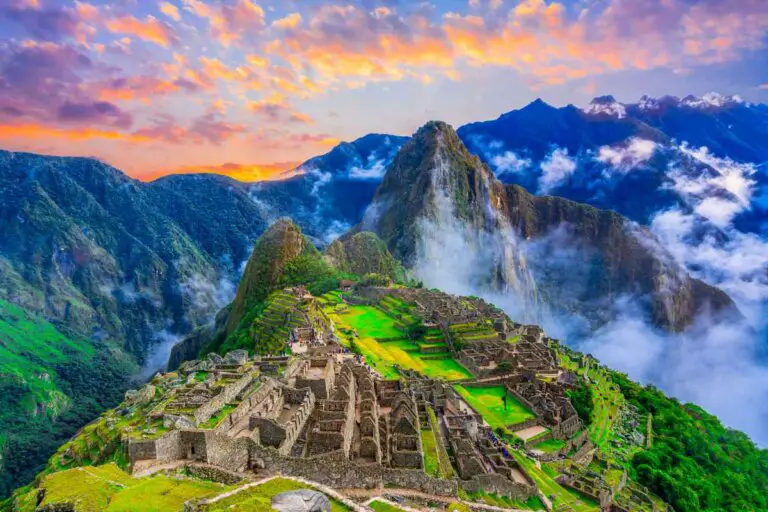
Machu Picchu is bigger than I thought and arguably the most famous Peru landmark. So I decided to start at the high end, from where I had the best classic views of the sanctuary. It is necessary to have a little patience to take good pictures, as the competition for the best places is big.
This city, as legendary as it is, offers an exceptional spectacle. I was able to see remains that are still very well preserved. Ancient cities, temples, pyramids, cultivation terraces, and sacred places extend over more than 300 meters square.
Every corner of the site has a fascinating story to tell. And in addition to being listed as a UNESCO World Heritage Site, it is also on the list of the New Seven Wonders of the Modern World.
I was very lucky, the day was beautiful, and with great visibility, I spent more than 3 hours walking among the ruins, taking pictures and enjoying. I started on the left by the high part, went down and around the lower part until I got tired and decided to leave.
2. Nazca Lines, Nasca
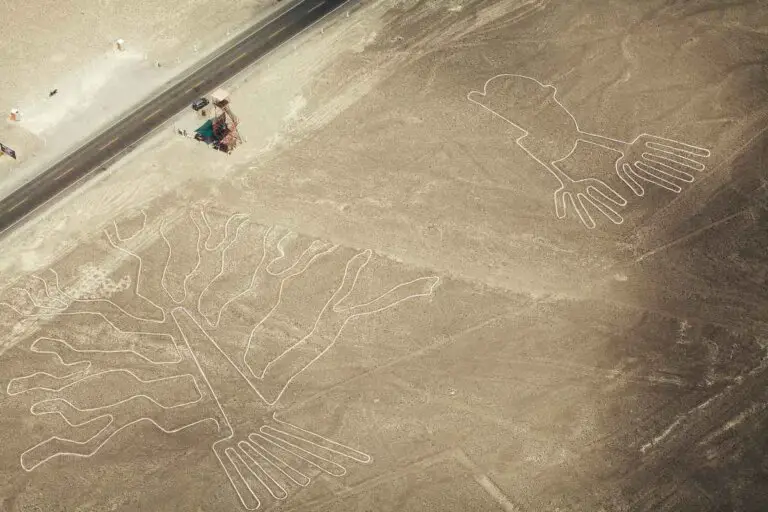
Peru is a real treasure trove of unique sights on a world scale, and one that really intrigued me was the Nazca Lines. The ancient civilization of Nazca supposedly left us stunning monuments: from the still functioning system of underground aqueducts to the famous Nazca lines.
These gigantic geoglyphs (located in the Nazca desert) were traced by the pre-Inca Nazca culture, which flourished between the 1st and 6th centuries. The drawings have geometric shapes of plants and animals. Nobody knew about these lines until the 1920s, when Peruvian airlines began flying from Lima to Arequipa and saw them from above.
Archaeologists have debated its purpose, and the possibility of a calendar was initially considered. Now it is believed that it could be an invocation of rain. Most of the drawings were made in the flat part of the desert, although on the slopes of the hills, there are some, especially with human forms.
To observe them, I recommend finding planes that fly over the lines and see each of the figures clearly. Apart from the lines, do not miss the planetarium, which helps you to understand the role of the lines. Truly, the Nazca Lines are probably one of the main Peru tourist attractions.
3. City of Cusco, Cusco
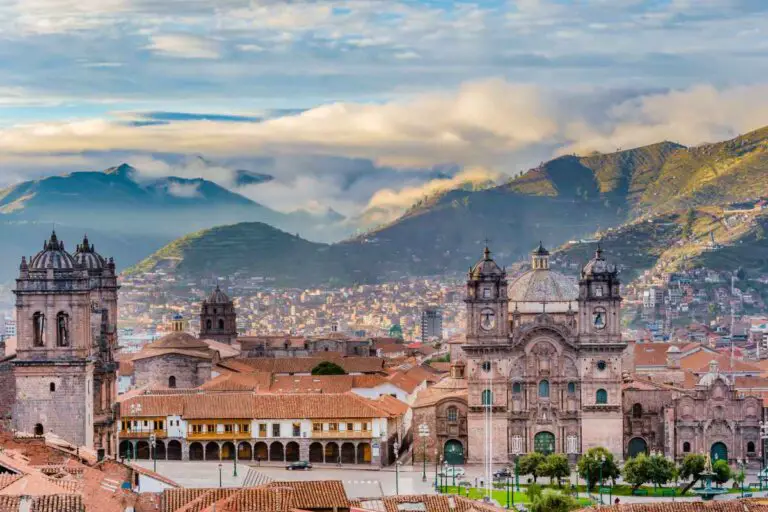
I set aside to visit the city of Cusco, the archeological capital of America, at an altitude of 3400 meters. I went early to the rental company to make arrangements, where I found another couple waiting to rent a car.
I toured the streets of Cusco, visiting several churches, squares, and many narrow streets with stone walls. Following a map with the main attractions of the city, I made an itinerary with the most interesting ones.
The Plaza de Armas (the main square in Cusco) is probably one of the places where people from the four corners of the world mingle, as well as the entire city of Cusco, in an impressive and constant movement of tourists.
My next stop was at San Cristobal Square, from where I had a good view of the city, then on to Cusco’s large central market, where I got an idea of the wide variety of agricultural products and Peruvian culture. The place is also a great tasting point, where juices of all flavors are served, freshly made, and typical lunches at very low prices.
4. The Sacred Valley, Cusco

My next suggestion for the best things to do in Peru is to visit the Sacred Valley of the Incas. It is a region on the outskirts of Cusco, which is made up of several smaller cities. In fact, a large part of the agricultural production that supplied the empire came from the place.
Among the main attractions of the Sacred Valley are sites for agricultural experiments, salt flats embedded in mountains, grain production counters, palaces, temples, and still inhabited cities.
Just to give you an idea of the beauty of the region, UNESCO, in 2006, included the Sacred Valley of the Incas in the list of World Heritage Sites.
The best way to get to know the valley is to rent a car or hire a one-day tour, which usually includes lunch and takes you to know the main destinations of the Sacred Valley.
5. Colca Canyon, Chivay
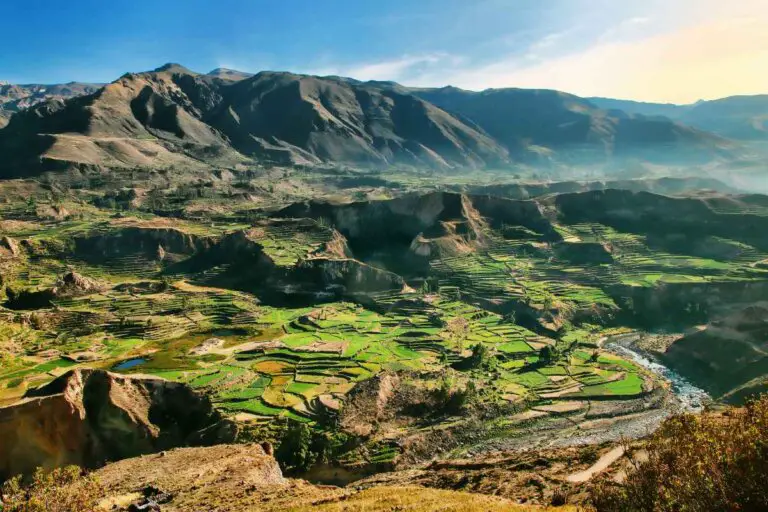
Next on my list of top tourist attractions in Peru is Colca Canyon. Along the way, there are several lookouts, and two frightening tunnels dug directly into the earth, without any concrete covering. The road goes up, and the valley gets deeper and deeper.
I arrived at the canyon, and the views were fantastic. They say it is the deepest canyon in the world, reaching more than 3000 meters deep from the top of the mountains to the riverbed.
In the morning, the movement is intense, with dozens of vans full of tourists coming from Arequipa. But at that time, around 4:00 pm when I arrived, it was just me and two other bikers who were also adventuring. I talked to them, enjoyed the incredible scenery, and took several photos, and luckily.
6. Choquequirao, Cachora
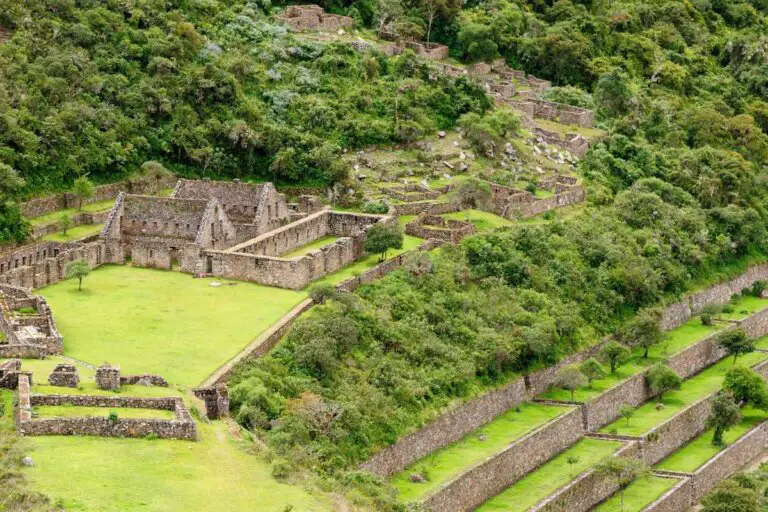
Choquequirao, which means “cradle of gold,” is a group of Inca ruins located in the snowy Salcantay. It is made up of terraces and buildings at different levels. And due to its similarity with Machu Picchu, I refer as “twin sisters.”
The unearthed part of the complex has nine sectors that house temples, squares, buildings, gigantic staircases, platforms, corrals, and channels for the supply of water. These constructions are quite well preserved, despite the time. More than 20 engravings with figures called “flame of the sun” have been found on the edged stones of the buildings.
Due to its structure, it is believed that Choquequirao was an important political and economic center, as well as a strategic point to control the coast-sierra-jungle axis. Some archaeologists affirm that Choquequirao has the appearance of having been a city in expansion, whose development was truncated by the arrival of the Spanish.
7. Moray, Maras
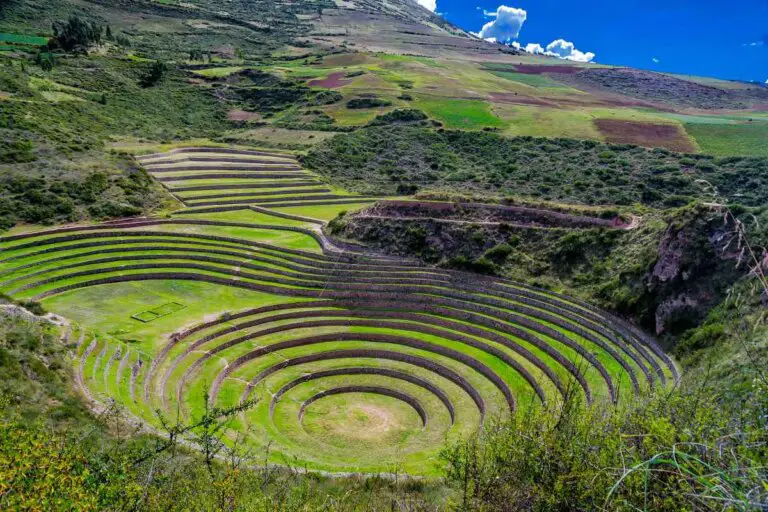
I’m not really interested in agriculture, the beauty and grandeur of the symmetrical circular terraces near the village of Moray left me amazed. At first glance, this area looks like a giant green amphitheater or a huge goblet formed layer by layer of flat terraces. Stone stairs are built into the walls of the terrace, allowing you to descend to the lowest level. The bottom view of the surrounding walls and the blue sky is impressive.
Note that each level of the terraces has its own microclimate, which allowed the Incas to have different conditions for their crops. With this knowledge, the Incas could determine which area is most suitable for a particular crop, after which the sowing work took place.
I was lucky to have visited this place in the months of September, and I had the opportunity to appreciate various typical dances of Cusco marked by their color. In addition, during the tour, I was able to learn the craft of salt production practiced by the ancestors.
8. Salinas, Arequipa Province
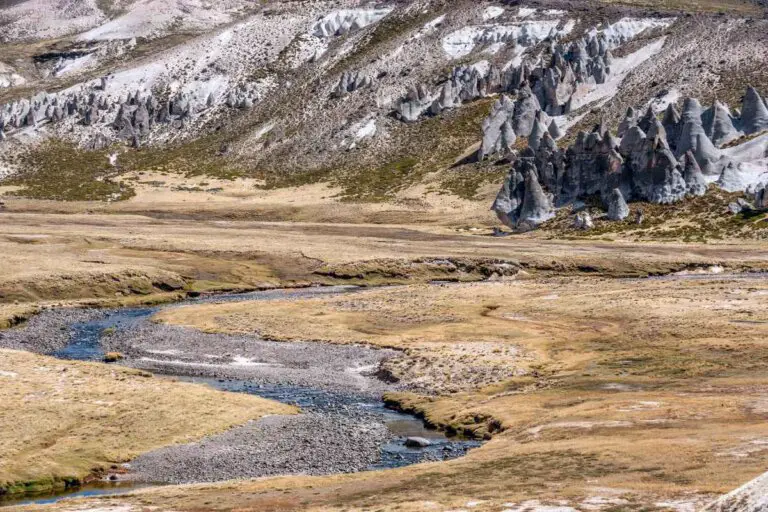
Not far from the village of Moray are the Salinas salt mines, which were actively used by the Incas. It is one of the most impressive Peru landmarks in the Sacred Valley, with 5,740 small pools called pokytos. The pools are filled with hot spring water, which the Incas passed through salt marshes. As the salt water evaporates, the salt crystallizes and collects. Each of the reservoirs allowed them to receive about 150 kilograms of salt per month.
I rented a car to reach the Salinas down a winding dirt road that winds along the mountainside. On the way, I stopped at several viewpoints overlooking thousands of salt pools. This helped me to understand better how huge the territory of the mines is.
9. Manu National Park, Cusco
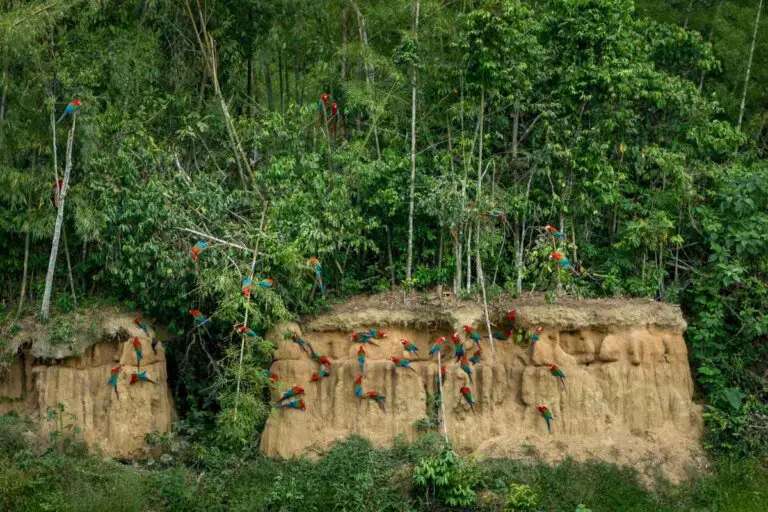
Another of the places to visit in Peru that I recommend is the Manu National Park. This is a paradise that keeps great natural biodiversity with five areas to visit. In these areas, I was able to explore the richness of the biodiversity found within the park. Likewise, I appreciated the exuberance of the Amazonian plain.
Being an expansive area, I found several viewpoints on my way where it was possible to observe this beautiful natural setting from the heights. With a large amount of fauna and flora, this park is one of the best Peru tourist attractions, where you will also enjoy hot springs, canoe rides, and bicycles.
10. The Amazon forest, Iquitos
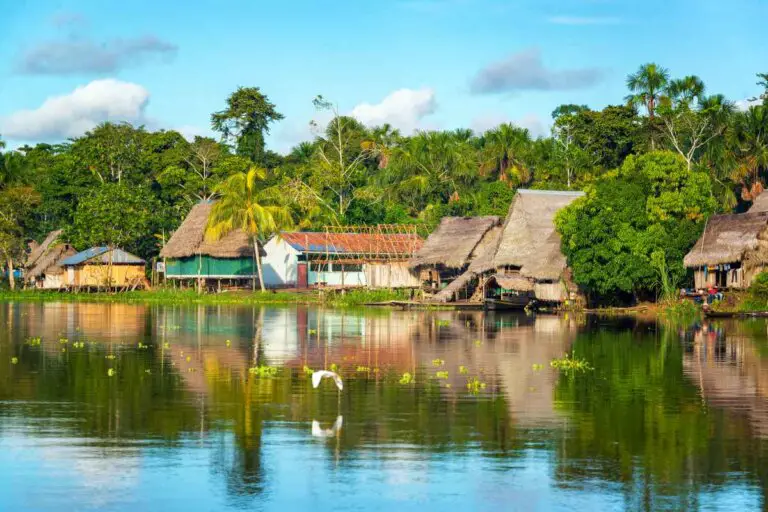
In Peru, I was able to see a lot of mountains, but the country also hosts a large part of the Amazon rainforest. It is the perfect place for ecotourism.
In the middle of lush vegetation, I went on an adventure for an exceptional experience. I was able to see different species of tropical animals: monkeys, birds, reptiles, but also all kinds of plants, trees, flowers, and fruits that exist only in the jungle. It was also a golden opportunity to meet indigenous communities. I learned their way of life, their natural remedies, and their way of seeing the world.
11. Lake Titicaca, Puno
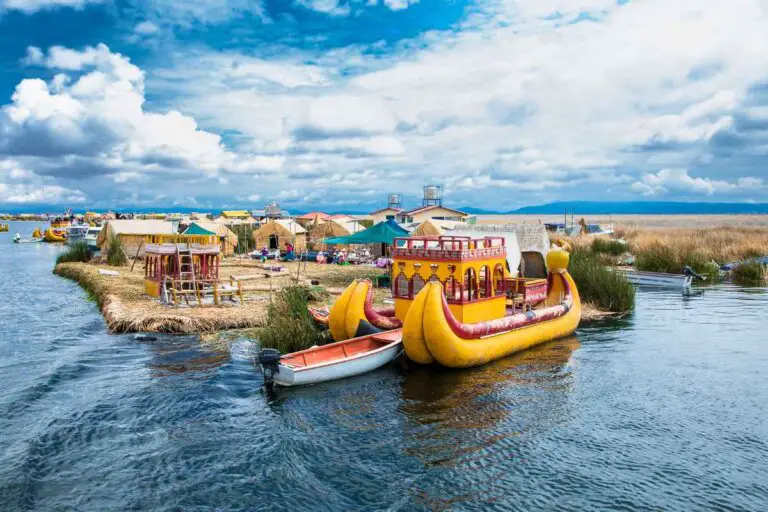
One of the attractive places in Peru is Lake Titicaca, a magical estuary with extensive Peruvian nature and history. This body of water (which is the highest navigable lake in the world) is located in the Andean highlands, at 3,812 meters above sea level. 56% of its surface belongs to Peru, the remaining 44% being Bolivian. The lake has 42 natural islands where the ancestral communities that have preserved their customs and cultural traits live.
The main tourist activities that I enjoyed in Titicaca were boat riding, visit the islands, and practicing sport fishing. In addition, I had the opportunity to try kayaking, trekking, and cycling. In its surroundings, there are a variety of artisan markets and fresh fish sales.
If you wish, you will experience experiential tourism because, in many of the islands, there are no hotels or hostels. So, the inhabitants open the doors of their houses to accommodate tourists, which will transform your trip to Peru into an unforgettable experience.
12. Huacachina Oasis, City of Ica
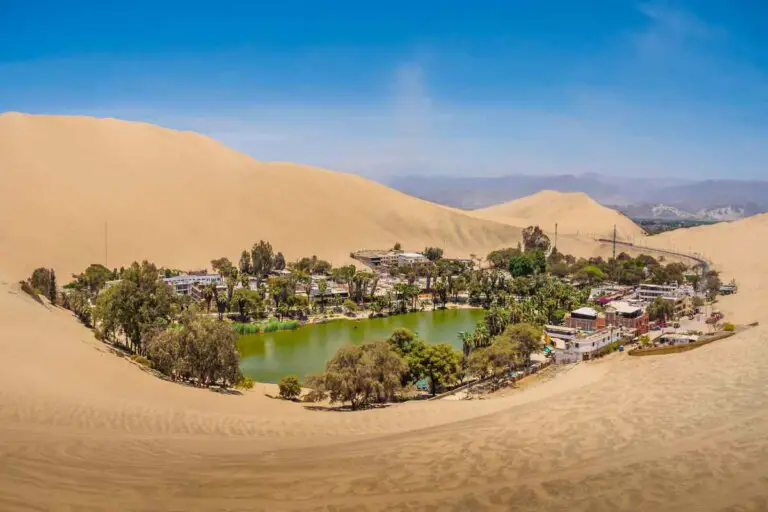
Still don’t know what to do in Peru? Then head down to Huacachina, an oasis surrounded by abundant vegetation in the middle of the Peruvian desert.
Lost in the middle of the dunes of the Ica region, I decided to take a break in this mini-town. Some of the interesting activities here that I recommend include taking a walk, sandboarding, and a Jeep ride in the middle of the mountains of sand. But I decided to try sandboarding. With a surfboard, I hurtle down the dunes and admire the landscapes while having a dose of adrenaline.
During the evening, I joined the locals in one of the restaurants for dinner and a good time. And being a charming town, there are beautiful resorts where you can spend your night.
13. Royal Tombs of Sipan Museum, Lambayeque
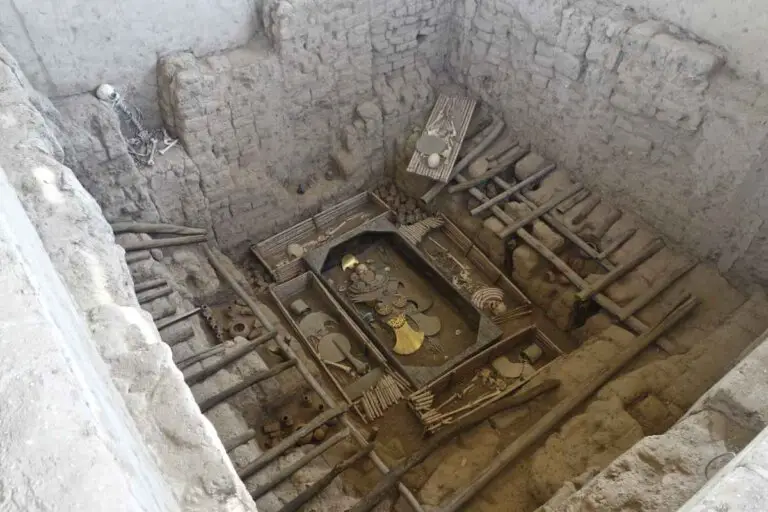
The Lord of Sipan was a ruler of the pre-Inca Mochica civilization, from the 3rd century, whose remains and burial chamber were found in 1987. It was a momentous find because it was the first burial of a pre-Inca king found with his treasure intact.
Inside the tomb, I saw the real remains in a wooden urn, the first coffin of this material in Peruvian archeology. The splendid funeral offering consisted of more than 600 objects, including gold, silver, and turquoise jewelry. These grave goods have been compared in grandeur to that of the pharaohs of Ancient Egypt.
Along with the remains of the Lord of Sipan were found those of eight other people: four men, three women, and a child. It is assumed that the three women were concubines and that the men were part of the monarch’s personal guard.
In 2002 the Museum of Royal Tombs of the Lord of Sipan was opened in the city of Lambayeque, which houses the found treasure and has an architecture inspired by that of the archaeological site.
14. Paracas National Reserve, City of Ica
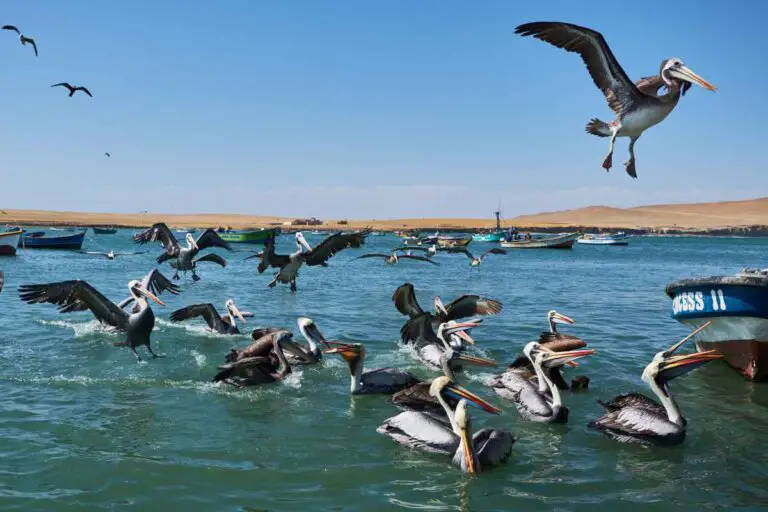
One of the tourist attractions of the Peruvian coast and that I insist you must visit on your vacation is the Paracas National Reserve. This protected area offers beautiful horizons along with its varied flora and fauna. Almost 2/3 of its extension is made up of coasts, wetlands, and other aquatic spaces, and the rest is mainly desert territory.
Its marine biodiversity is among the richest in the world due to the abundance of plankton and the impact of the Humboldt Current on cooling water. During my visit to this natural attraction in Peru, I enjoyed walks and sandboarding rides, which are very common in this area.
This national reserve is among the Peru tourist attractions that are naturally best equipped for outdoor entertainment thanks to its beaches, spaces for observing life, extreme sports, archaeological museums, and natural monuments.
15. Pisak Market, Pisac
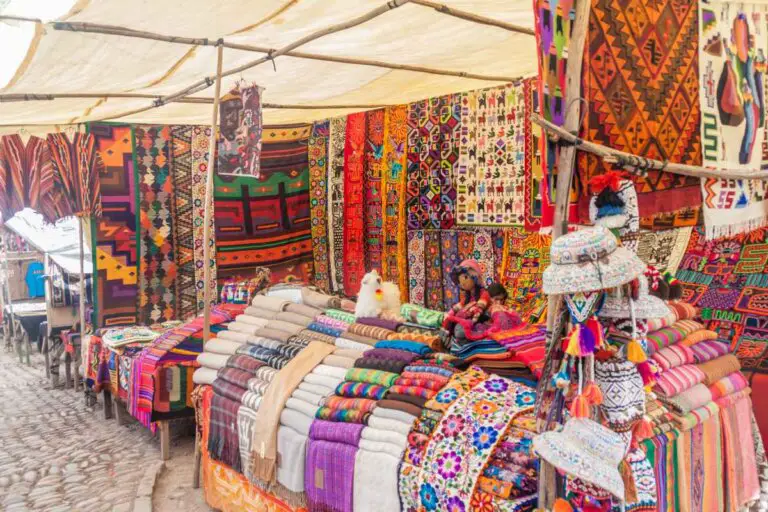
I decided to end my trip with the pleasant town of Pisac, located on the banks of the Urubamba River, 32 km from Cusco. Apart from its famous ruins, the city is also known for its huge and vibrant Sunday Market. It is a great place to shop for a variety of local products. The market is mainly known for woolen patterned fabrics and colorful traditional clothing.
The main trading day is Sunday, but the market is also open on Tuesdays and Thursdays (and some traders do it every day). While it is rare for market sellers to find the same level of quality, I can assure you that there is a huge selection and low prices (especially if you are not averse to bargaining).
The market is located at the main square, which also houses a beautiful old church. On the square, I met women in their best traditional outfits. Many of them come to the market specifically to be photographed by tourists. If you plan to do this, keep in mind, they are expecting payment.
The city has a good offer of tourist accommodation and a good selection of restaurants. Thus, it is a suitable stop for those who have time to linger.

